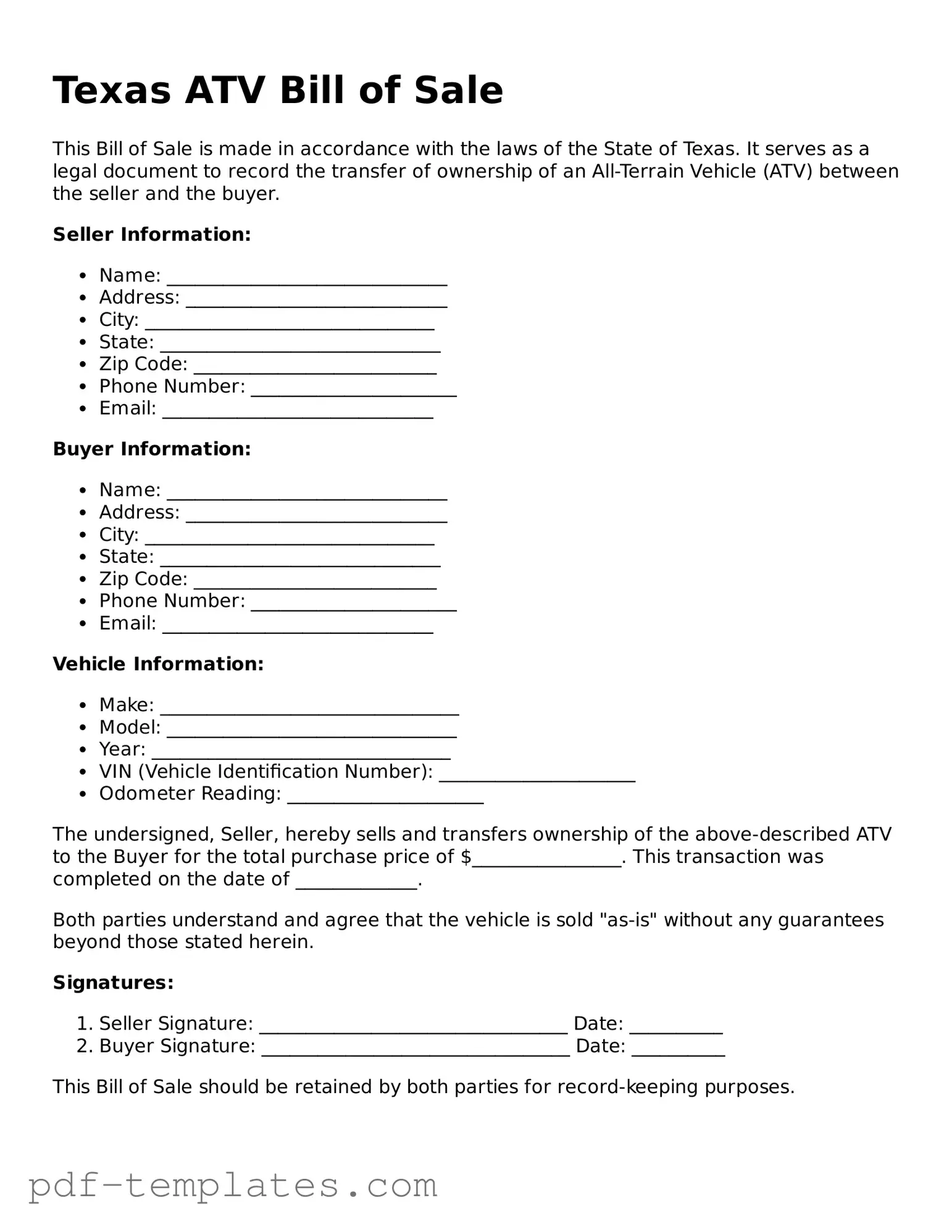The Texas ATV Bill of Sale form shares similarities with the general Vehicle Bill of Sale. Both documents serve as proof of transfer of ownership from one party to another. They typically include essential details such as the names and addresses of the buyer and seller, a description of the vehicle, and the sale price. Just like the ATV Bill of Sale, a Vehicle Bill of Sale may also require signatures from both parties to validate the transaction, ensuring that both the seller and buyer acknowledge the transfer of ownership.
Another document that is comparable is the Boat Bill of Sale. This form is used when selling or purchasing a boat, much like the ATV Bill of Sale is used for ATVs. Both documents outline the buyer and seller's information, a description of the item being sold, and the sale price. Additionally, they serve as legal proof of ownership, which can be crucial for registration and titling purposes. The structure and purpose of both forms are similar, ensuring that all necessary details are captured during the sale.
The CA DMV SR1 form is a crucial document that resembles other ownership transfer forms in its importance. It not only serves to report traffic accidents but also ensures that all involved parties have the necessary documentation to protect their rights. As with various sales forms, the timely submission of this report helps maintain clear records and accountability. For those seeking additional resources or related documentation, All California Forms can be beneficial.
The Motorcycle Bill of Sale is yet another document that mirrors the ATV Bill of Sale. Both forms are designed to facilitate the transfer of ownership for motorized vehicles. Each document includes the seller's and buyer's information, a detailed description of the motorcycle or ATV, and the agreed sale price. They also often require signatures to confirm the transaction, making them legally binding. This similarity helps to protect both parties involved in the sale.
The Snowmobile Bill of Sale is also akin to the ATV Bill of Sale. Just as the ATV Bill of Sale records the sale of an all-terrain vehicle, the Snowmobile Bill of Sale documents the transfer of ownership for snowmobiles. Both forms contain similar elements, such as the names and addresses of the buyer and seller, a description of the vehicle, and the sale price. They serve the same purpose of providing legal proof of ownership and can be used for registration with the appropriate state authorities.
In addition, the Trailer Bill of Sale is comparable to the ATV Bill of Sale. Both documents are utilized to record the sale of a vehicle or equipment, ensuring that the transfer of ownership is officially documented. Each form includes details about the buyer and seller, a description of the trailer or ATV, and the sale price. They also typically require signatures from both parties, reinforcing the legitimacy of the transaction and protecting the rights of both the buyer and seller.
Lastly, the Personal Property Bill of Sale can be likened to the ATV Bill of Sale. While the ATV Bill of Sale specifically pertains to all-terrain vehicles, the Personal Property Bill of Sale covers a broader range of items, including vehicles, equipment, and other personal property. Both documents serve the same fundamental purpose of documenting a sale and transferring ownership. They include similar information, such as the buyer and seller’s details, a description of the property, and the sale price, making them useful for various types of transactions.
